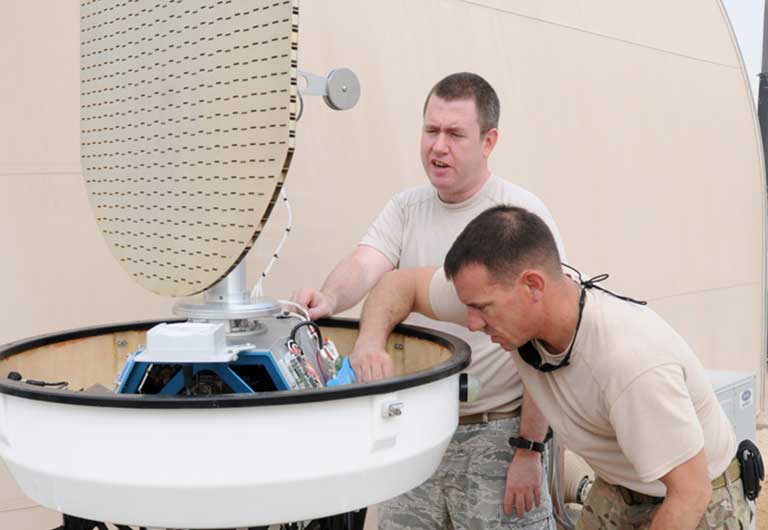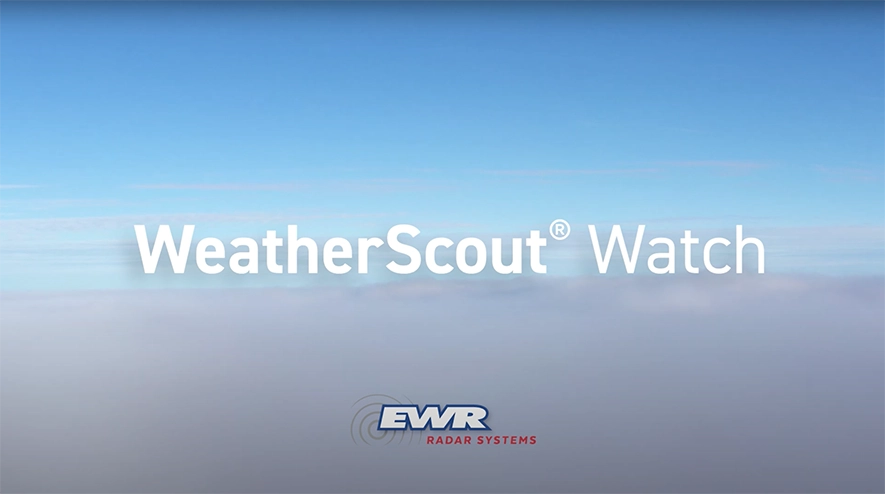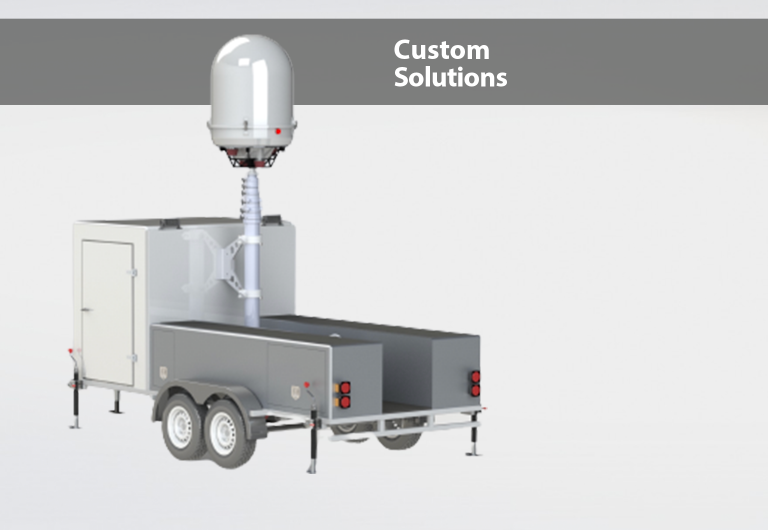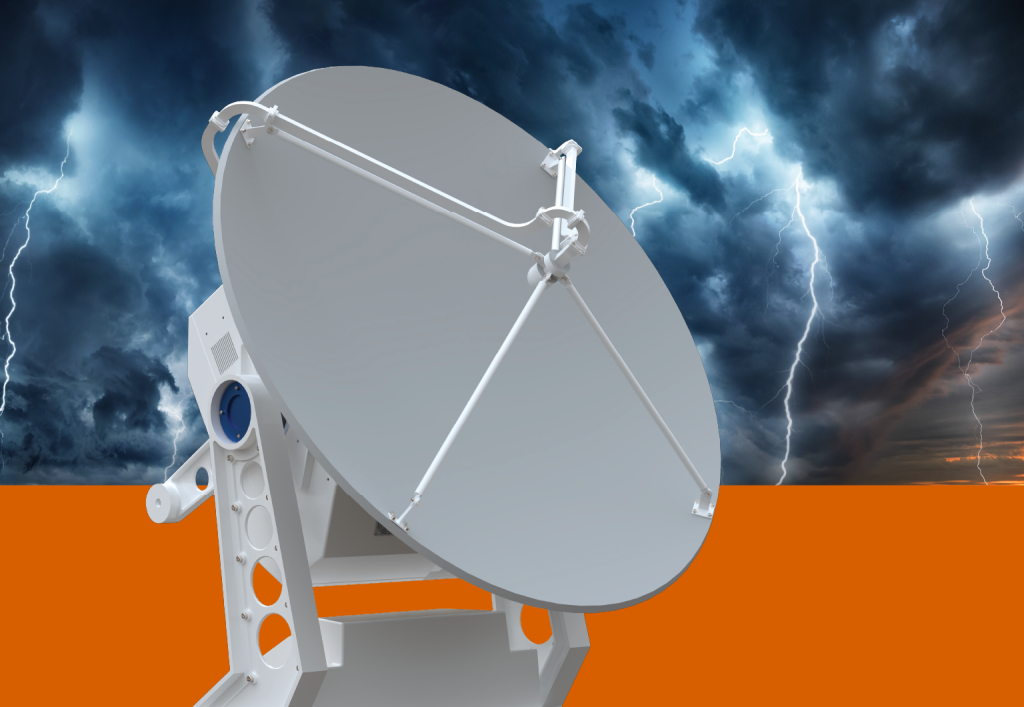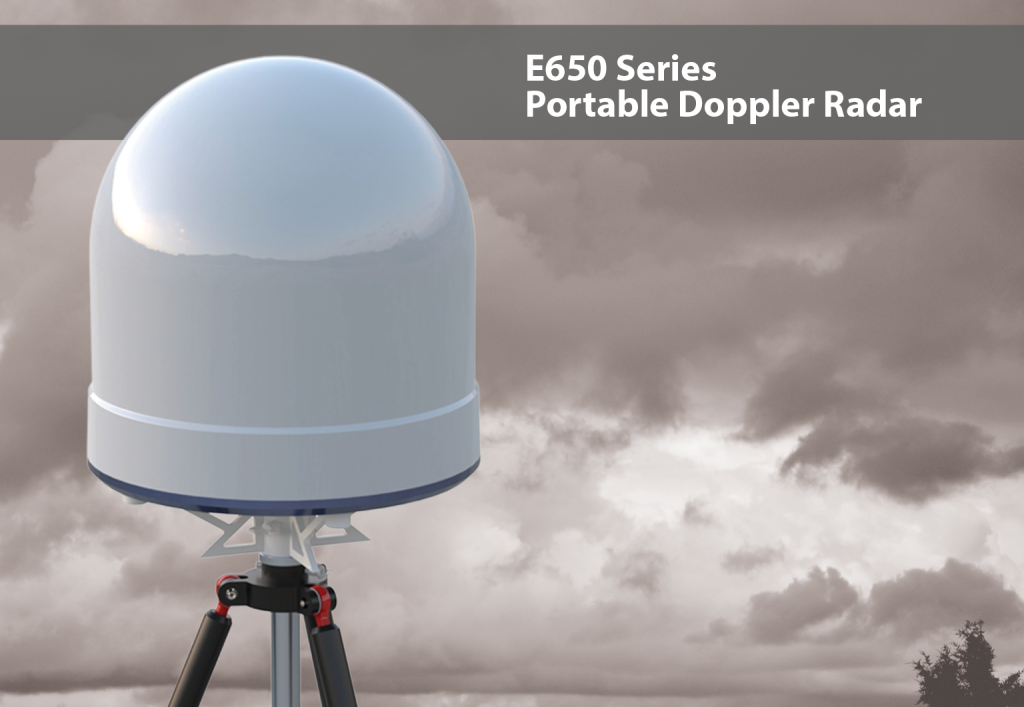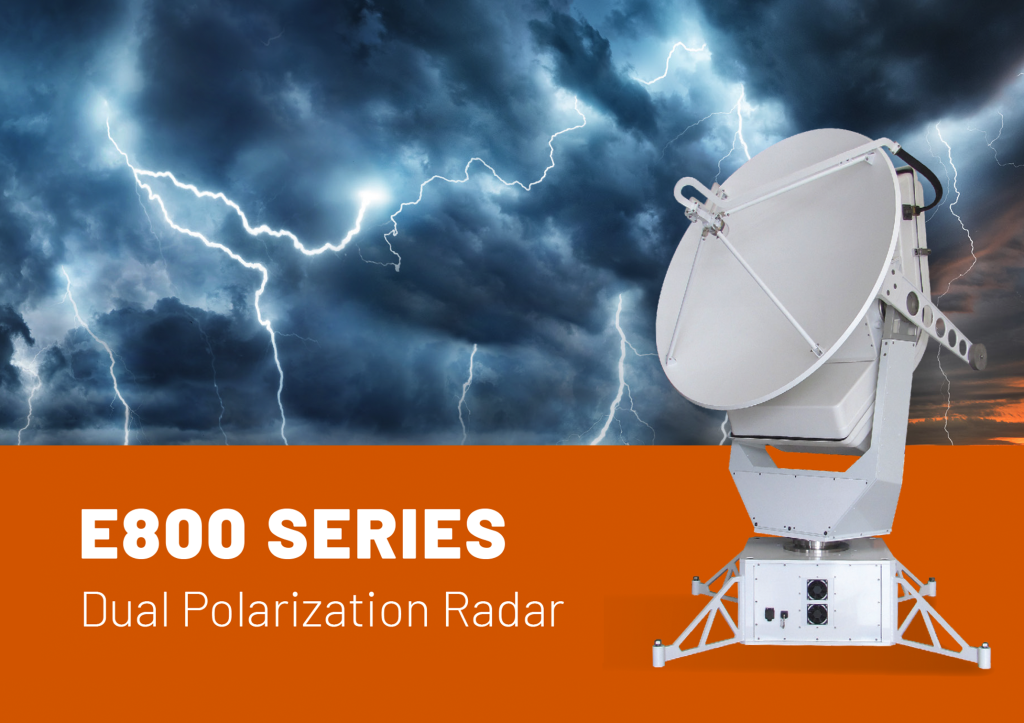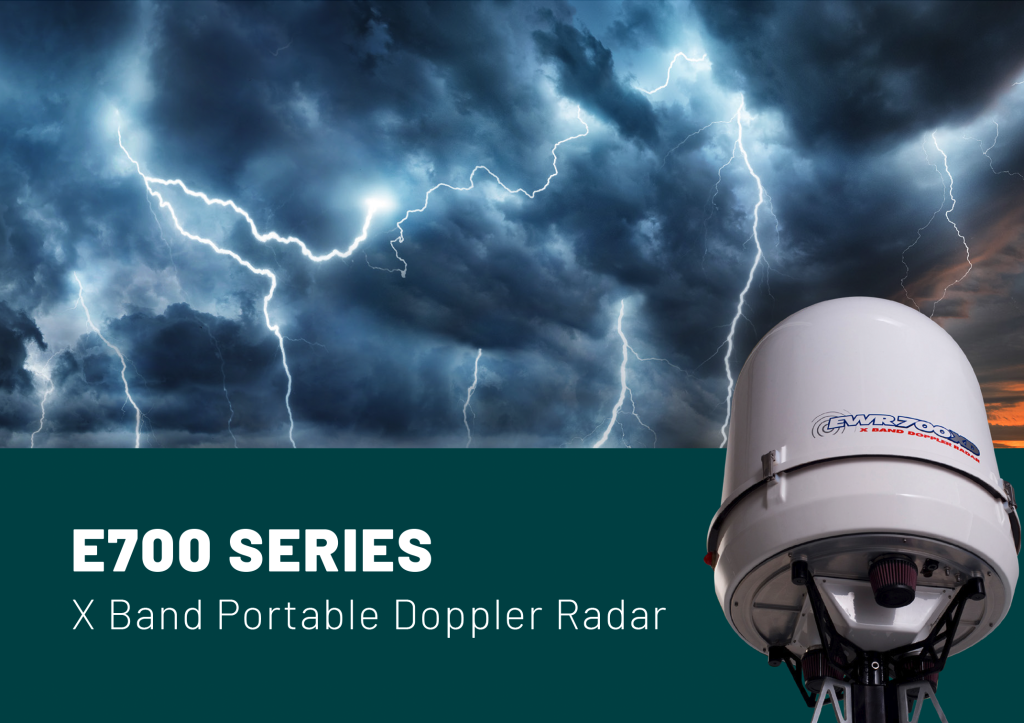Thunderstorms — in the desert?
They happen more often than most people realize, and are just as important to watch as sandstorms.
The 380th Expeditionary Operations Support Squadron Weather flight will soon be able to better monitor for the potential for these storms with the recent installation of a portable Doppler radar.
“We actually get thunderstorms quite frequently on the perimeter of (this deployed location’s city) … especially during the summertime,” said Maj. Jeanne Szczes, 380th EOSS Weather flight officer in charge. “Sandstorms are more of a threat during the wintertime.”
With Doppler radar, “we’re actually able to look inside the storm,” said Szczes, who is deployed to the 380th Air Expeditionary Wing from Offutt Air Force Base, Neb. “We’re able to interrogate it, looking for such things as turbulence, hail, and wind shear conditions.”
Radar the flight is currently using only gives reflectivity data, or an outside image of the storm, said Szczes, a St. Augustine, Fla., native.
The current radar’s data updates only every 7-12 minutes, meaning the weather flight cannot see a storm in real time, the major said. With the Doppler radar, the flight will be able to see a storm build and collapse, or die, in real time. When a thunderstorm collapses, its last “breath” of wind is often the most dangerous.
“When that thunderstorm collapses, we’ll get a lot better advance warning of any dangerous outflows that may come from that,” Szczes said.
The 380th EOSS Weather flight, a shop of six people, provides 24/7 weather forecasts and resource protection for the personnel and aircraft here, said Master Sgt. Donald Milliman, 380th EOSS Weather flight chief.
“With the radar being able to reach out, if we have thunderstorms coming towards us, we’ll be able to gauge the intensity of those thunderstorms and how they’re going to affect the mission,” said Milliman, who is deployed from Incirlik Air Base, Turkey, and is also a St. Augustine native.
Tech. Sgt. Matthew Brown and Staff Sgt. Samuel Trammel, U.S. Air Forces Central Weather Systems Support Cadre members, are forward-deployed here to help the weather flight install the portable Doppler radar. The WSSC is a weather maintenance unit responsible for all U.S. AFCENT weather assets, including the 380th EOSS Doppler radar, the first of its kind in the host nation.
“It’s been a great experience coming here to help install the radar,” said Brown, a Logansport, Ind., native deployed to Bagram Air Base, Afghanistan, from Hurlburt Field, Fla. The WSSC team offered preventive maintenance inspection tips and some training, in addition to the training a few members of the weather flight had previously received on the radar.
“The one thing about this radar is (it) is the only radar in theater that’s on the mast (pole) we put up,” Brown said.
The mast is erected in sections to a 30-foot height and must be frequently oiled and maintained.
“That … is going to be a challenge for the weather flight here to ensure those PMIs are done on them and done properly,” Brown said. “If the (Doppler) system fails for whatever reason, the means of bringing it down is through that mast.”
Challenges associated with the Doppler radar aren’t new to the weather flight. Though the system was initially scheduled to be installed by the previous weather flight rotation in February, complications at the AFCENT level halted the installation, Szczes said.
However, the major’s rotation and 380th AEW leadership had a high interest in restarting the installation process because of what the radar provides.
“We’d rather have something here that can actually interrogate a storm, as opposed to … not getting the realtime data and only getting the surface of the storm,” the major said.
Szczes said though the installation has been fast-paced, it has gone smoothly thanks to the weather flight’s and WSSC team’s teamwork, as well as from the assistance of Tech. Sgt. Will Selby, 380th Expeditionary Communications Squadron member.
“He’s been immensely helpful to us, not only helping us physically lift things but also with his technical knowledge and his inner workings with the (communications) squadron and even (380th Expeditionary Civil Engineer Squadron),” Szczes said. “Without him I don’t think this project would have been possible.”
The major said the communications piece Selby provided is crucial to the weather flight, as it provides the flight the ability to send the radar’s data out to the people and agencies that require the information, in addition to being how the flight receives information from the radar.
“Weather lives and breathes by (communication) – it’s the only way, one, we’re able to receive our weather data, and two, one of the only ways we can communicate it out,” Szczes said. “Half the battle (for the weather flight) is one, getting the forecast right, but two, communicating it. A perfect forecast does no one any good unless you’re able to communicate it.”
Szczes said the weather flight is looking forward to the data they will be able to receive from the new radar.
“Weather people tend to get excited about their new weather tools,” she said. “This is just another data point we’ll be able to draw from. If we can get more data that makes our forecaster better, we will be able to cater to the mission better.”

